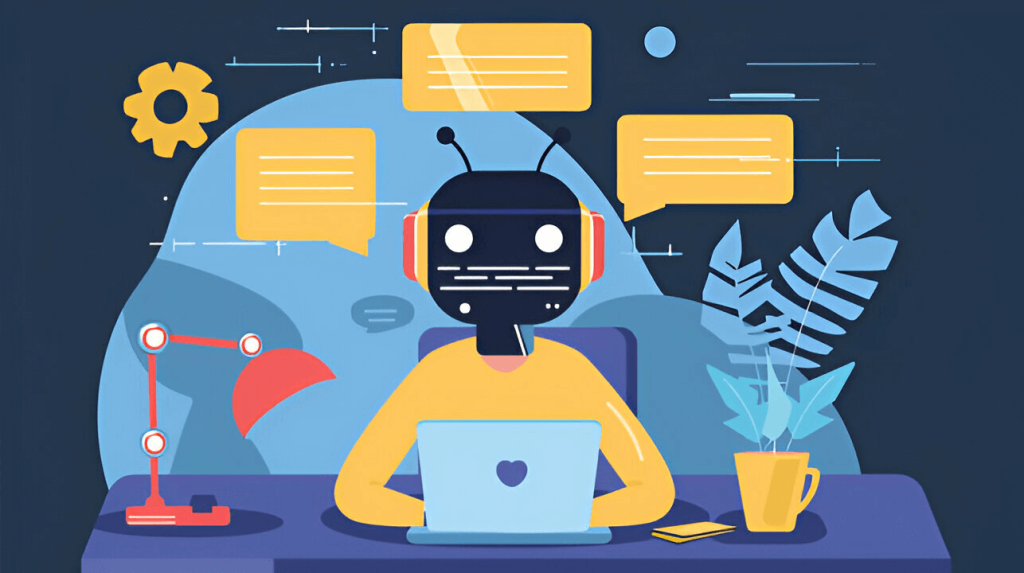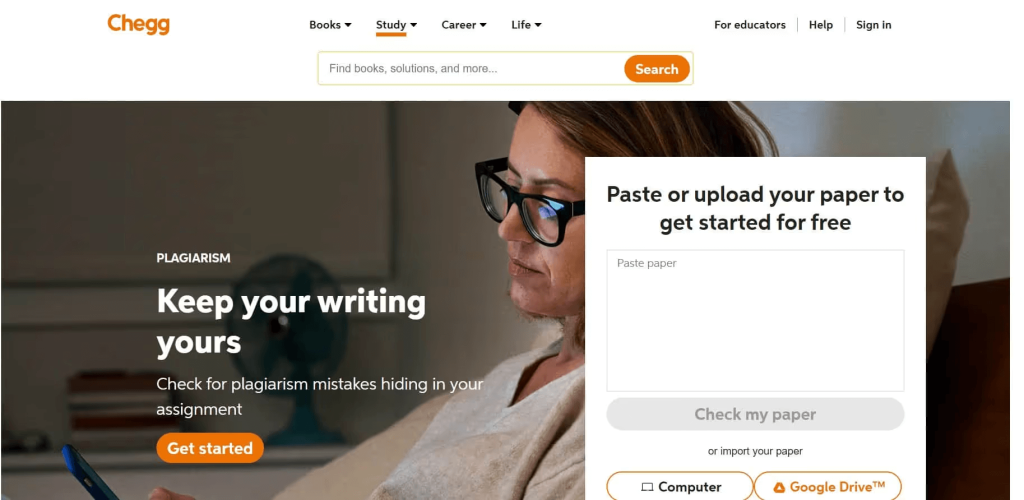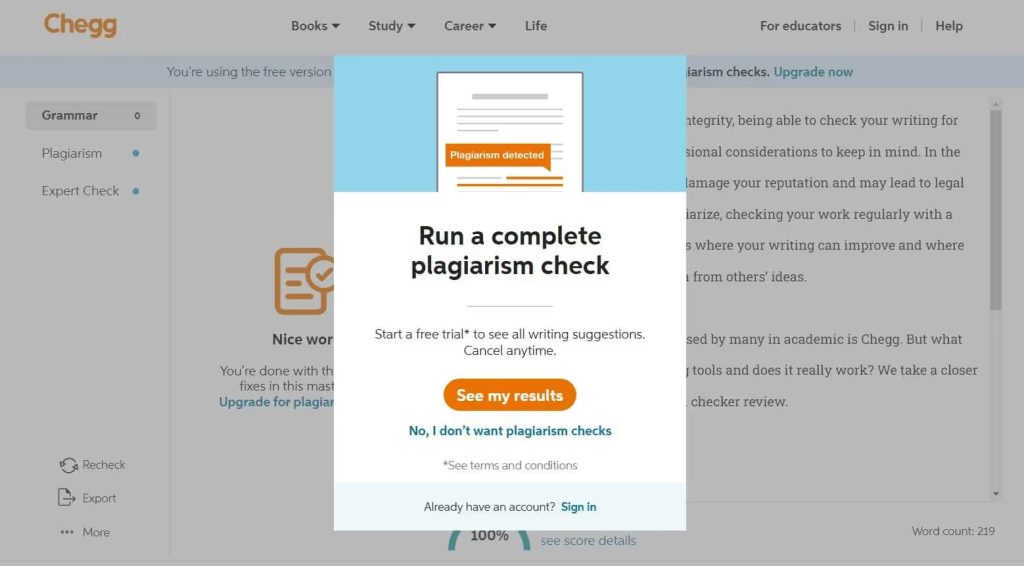Checking your writing for plagiarism is important, not just for keeping up with honest work in school, but also for ethical and job-related reasons. If someone finds plagiarism in your work, it could really hurt your good name and you might even face legal trouble. Sometimes, you might copy something by mistake. Using a plagiarism checker often can help avoid these problems.

Keeping your work original is really important, not just for school, but it’s also the right and professional thing to do. If you copy someone else’s work too much, it can make people think less of you, and you could even get into big trouble. Sometimes, you might not mean to copy, but using a tool to check your writing helps you get better and make sure you’re not taking too much from someone else.
A lot of students and teachers use Chegg to check for copying. But how good is Chegg compared to other similar tools? Let’s dive in and see what Chegg’s checker is all about.

It’s a part of a big company called Chegg that’s really into helping students. Besides checking for copied stuff, Chegg gives out e-textbooks, does online tutoring, and has a math solver among other things to help students with their classes.
How does it work?
Chegg’s Plagiarism Checker acts just like a lot of plagiarism tools online. It helps everyone, students and pros, to make sure their work is their own. Chegg can look at lots of different file types like plain text, PDFs, DOCs, and DOCX files. Plus, you can even link a Google Docs file and Chegg will check that for plagiarism too.
First off, it lets you use different types of files. Chegg uses smart AI and a huge pile of information from the web, schools, and lots of databases. It checks your work and tells you if it’s original by giving it a special score after it looks for plagiarism.
If you have a Chegg account that you pay for, you get a detailed report. This report shows where plagiarism might be and offers tips on how to fix it by suggesting better ways to rewrite or properly give credit. And it does all of this super fast, whether you upload your document or just paste your text in.
The way Chegg is set up is also really easy to get. It works a lot like Grammarly and other writing aids by giving advice on how to make your writing and grammar better.
To check your work for plagiarism with Chegg is simple.
Here’s what you do:

Checking for copied work on Chegg is really easy – just push a button.
Like every tool that checks for copying online, Chegg’s version has its good points and its bad points.
You need a special account to use Chegg’s full check for copied work.
There are other tools like Grammarly and Netus.ai that check for copied work better and cost less. Even though you have to pay for Grammarly and Netus.ai, unlike Chegg’s free checker, they give more detailed results and extra help that both students and workers will like.
For instance, Grammarly gives tips to make your writing better in style and tone. On the other hand, Netus.aiI looks for work made by AI as well as work copied from other places.
Netus.ai checks for copied work. It doesn’t just look for usual copied stuff but also finds if an AI wrote something. It’s not just for schools, but teachers can use it to spot essays that AI, like the newest ChatGPT, wrote.
Chegg can look through millions of places online. But, Netus.ai checks over 70 billion web pages. Also, Chegg’s website is easy to use but plain. Netus.ai makes it super easy to see if something might be copied or written by a computer because it uses colors and highlights.
Chegg is made for teachers. It works with school programs like Canvas and Blackboard. Netus.ai doesn’t connect with those and stands on its own. Lastly, Chegg charges for each document you check. Netus.ai lets you pay once a month or per document. This is great for people who need to do lots of checks or want to look for copies and computer-written stuff.
Well, it uses really smart AI tools to find clues that show if something was written by AI like ChatGPT. It’s always learning from new stuff because AI writing gets better over time. So as things change, Netus.ai gets better at noticing when a computer might have written something.
What Netus.ai does first is chop up the text into small pieces. Then, it checks these pieces against a huge number of documents it knows about. It’s really good at noticing when things are a lot alike. With its learning skills, it decides if what’s written is just copied from somewhere else or not. For instance, it wouldn’t get upset over a quote or something people say a lot, because it knows that’s not copying. It’s pretty clever at seeing the difference.
After the scan finishes in just a few minutes, it hands the user a report colored in different ways. This report points out possible matches one by one, so fixing them is simple.
Chegg has a basic plagiarism tool. When you look at other tools out there, Chegg isn’t as good because it has a smaller database and it costs more. If you only need a simple check for copying now and then, Chegg might work for you. But, against tools that use AI and know a lot about languages, like Netus.ai, Chegg can’t really keep up. These advanced tools can think better about what counts as copying, not just when words are exactly the same.
Give Netus.ai a try! You can check your papers for just one penny per 200 words. Whether you pay for each paper you check or get a plan, Netus.ai helps you make sure your work is top-notch, written by a person, and not copied.
Through digital leadership we empower people to leverage the opportunities in global economy
@ 2024 Netus AI.